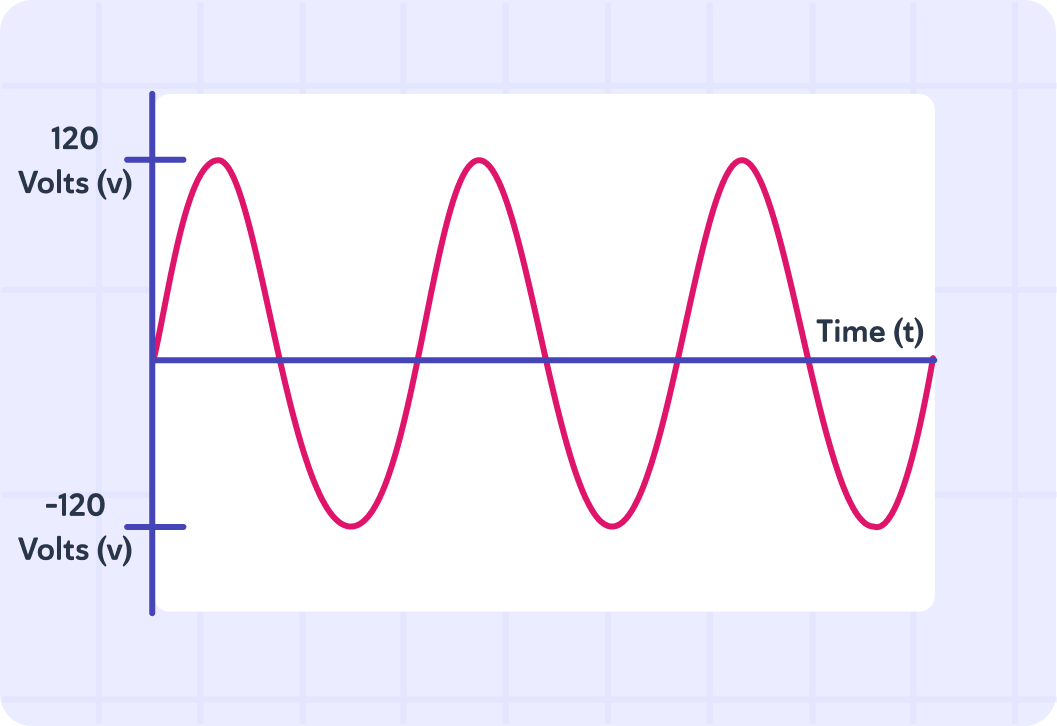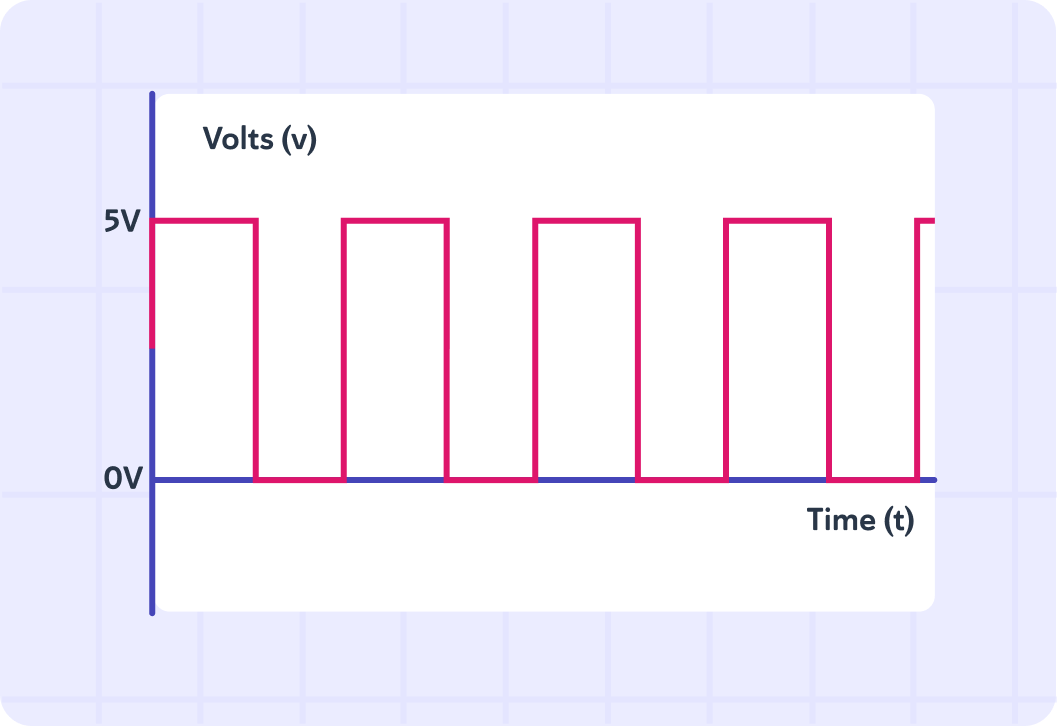YOU ARE LEARNING:
Digital Analogue

Digital Analogue
This lesson looks at the terms analogue and digital in terms of continuous variation and high/low states.
Circuits can be either digital or...

Imagine we want to measure an electronic signal, for example if we are going to test a circuit to see how much signal it can withstand. What do you think we would actually measure?

This shows how the voltage of an analogue signal varies over time.
Notice that the value of the voltage can be anything between the highest and lowest value of voltage. It can be 87 V and 87.2 V and 87.235 V and 87.23549 V etc.

This shows how the voltage of a digital signal varies over time.
Notice it only has two values. It can either be 0 V or 5 V.

Which of the signals can give an infinite number of values?

Which of the signals gives a discrete number of values?

One of the signals has what we call a continuous range of variation. The other signal has what we call a discontinuous range of variation. Which signal has a continuous range of variation?

To recap, there are two types of electrical signal: Digital and analogue. A signal is measured on how the voltage varies over time.
A digital signal...
gives a finite or discrete number of values This means the signal is discontinuous.
An analogue signal...
can give an infinite number of possible values. This means the signal is continuous.
Due to the differences between the two signals, we use them for different purposes.
One of the signals gives very specific readings. The other signal gives more general readings. Which one do you think gives the more specific readings?

Which signal has the wider range?

One of the signals is much more prone to error than the other one. Which one do you think that is?

Digital signals are more specific than analogue signals, which makes them much harder to distort.
That means digital signals are more useful than analogue signals in for example TV signals or computing.
Analogue signals have a wider range than digital signals.
This means that we can use them for a number of different purposes that we can't use digital signals for, for example in microphones.
We say that one of them has a high/low or 1 or 0 state. Which one do you think that is?

